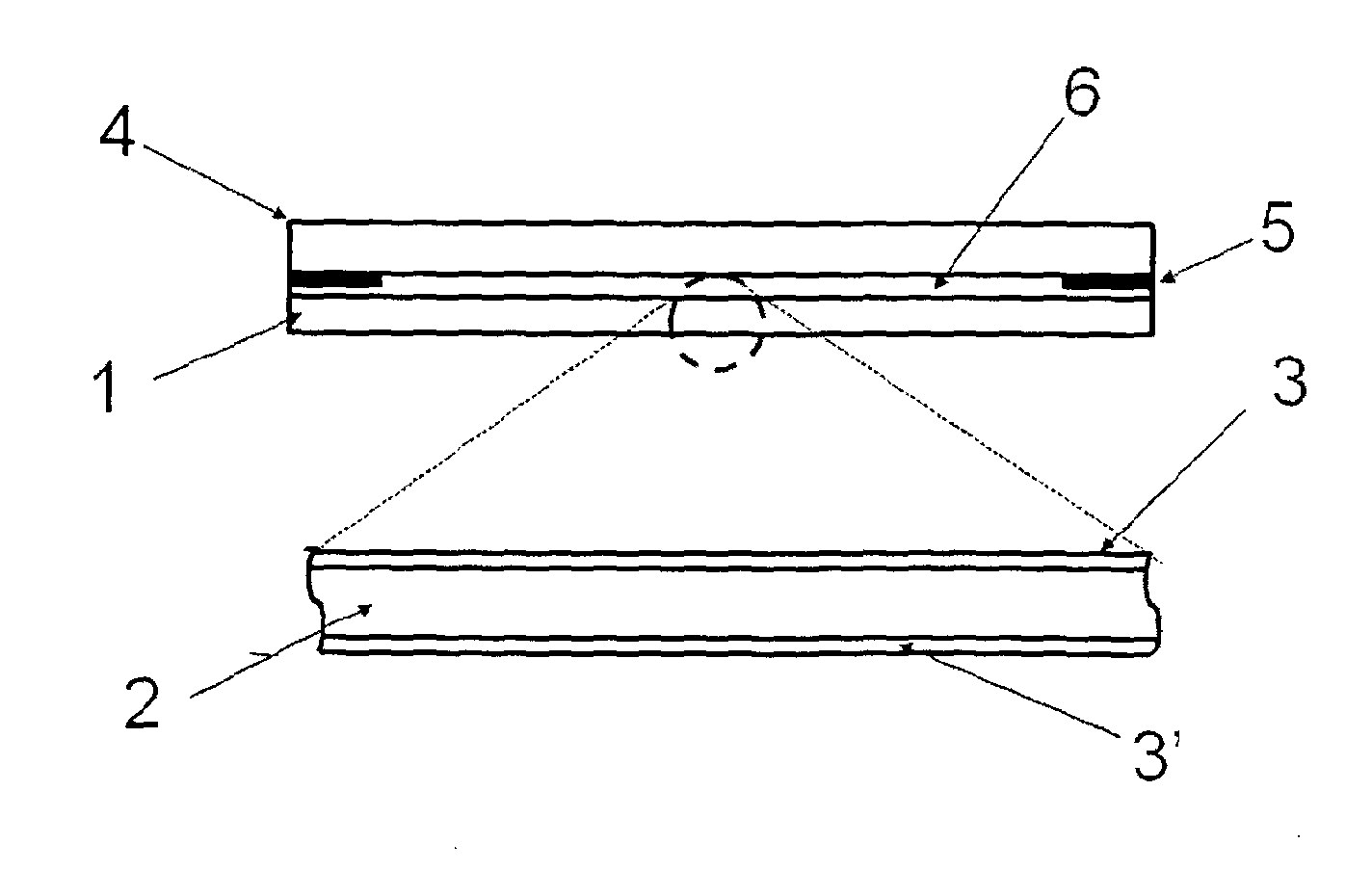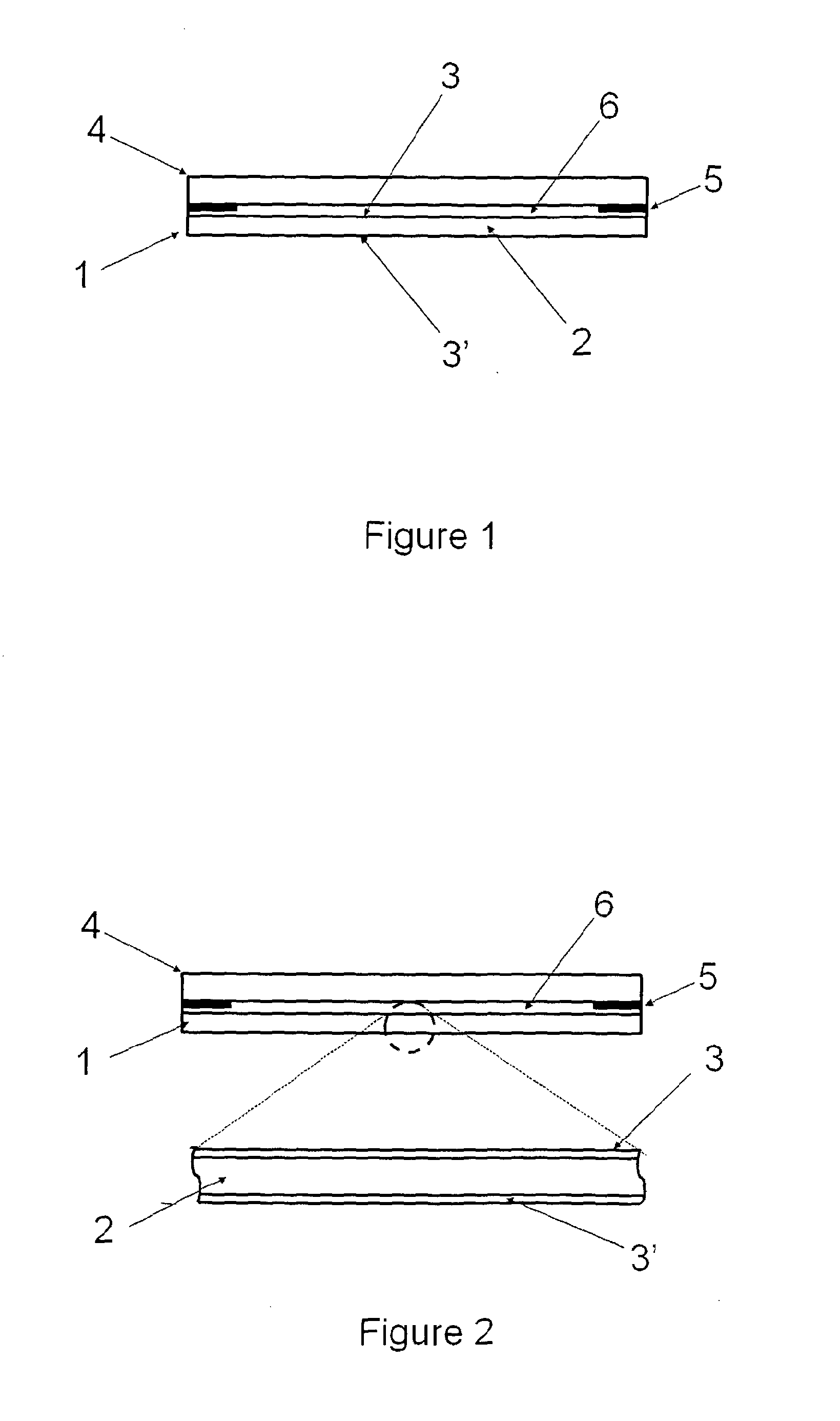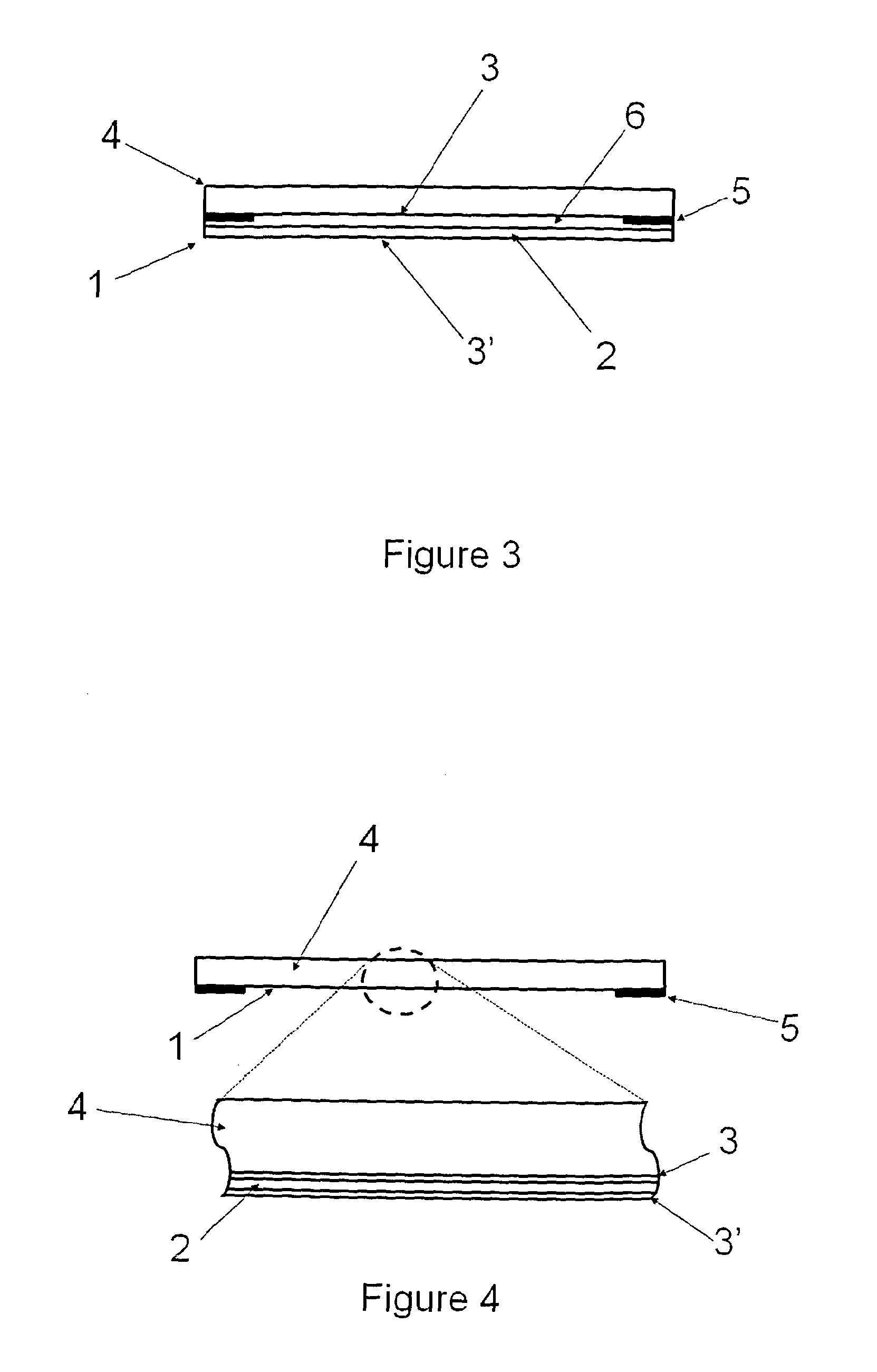Method for making a two-layer capacitive touch sensor panel
a capacitive touch sensor and capacitive technology, applied in the field of two-layer capacitive touch sensor panels and to the panel, can solve the problems of high cost, undesirable thickness and heavy weight of the cover/sensor module, and reduce the thickness and weight of the sensor panel
- Summary
- Abstract
- Description
- Claims
- Application Information
AI Technical Summary
Benefits of technology
Problems solved by technology
Method used
Image
Examples
Embodiment Construction
[0056]FIG. 1: This shows the construction of a first known type of cover / sensor module as used in many hand held devices with capacitive touch capability. Capacitive sensor 1 is of a two-layer type and consists of a transparent dielectric material 2 such as plastic or glass with a transparent conducting layer (TCL) on each side 3, 3′. Electrode patterns are formed in the TCLs to create the capacitive sensor. Cover sheet 4 is made of either glass or plastic and may have decorative ink 5 applied around the border. The capacitive sensor 1 is generally bonded to the cover sheet glass by means of UV curing glue 6 that fills the gap between the cover sheet 4 and the sensor,
[0057]FIG. 2: This shows the detail of the construction of the type of sensor 1 shown in FIG. 1. The dielectric substrate 2 for the capacitive sensor is generally made of glass or plastic. In the case of a glass substrate the thickness is generally in the range 0.33 to 0.7 mm. In the case of a plastic substrate the thic...
PUM
 Login to View More
Login to View More Abstract
Description
Claims
Application Information
 Login to View More
Login to View More - R&D
- Intellectual Property
- Life Sciences
- Materials
- Tech Scout
- Unparalleled Data Quality
- Higher Quality Content
- 60% Fewer Hallucinations
Browse by: Latest US Patents, China's latest patents, Technical Efficacy Thesaurus, Application Domain, Technology Topic, Popular Technical Reports.
© 2025 PatSnap. All rights reserved.Legal|Privacy policy|Modern Slavery Act Transparency Statement|Sitemap|About US| Contact US: help@patsnap.com



